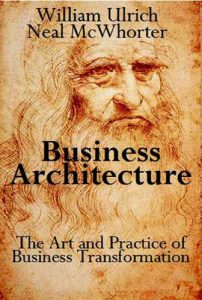Organizations have grown so complex in recent years that it is difficult to visualize or understand how all of the parts fit together.
At the same time, executives want to reshape and transform their organizations to be more competitive and more customer centric.
This requires that executives across business units view issues and solutions from a shared, enterprise-wide perspective.
Business Architecture maps and documents the essence of the enterprise.
Visualizing a business through architectural disciplines is not entirely new. Creating a business-friendly framework that allows business professionals to visualize and transform organizations, however, is a groundbreaking achievement!
The most important aspect of business architecture is enabling business executives, managers and professionals to take ownership and drive enterprise transformation, a role that has oftentimes been delegated by default to IT. Historically, the term "enterprise architecture" has a tendency to turn off business professionals because they immediately assume that the concept is an IT focused creation. This is not an indictment of IT but rather a call to action for business executives to take ownership of business architecture and related business transformation strategies. The decisions that are made today can make or break organizations going forward into a complex, uncertain future.
Make no mistake. This is not a book about IT, but a book for business professionals who want to address difficult challenges across enterprises that have become bewildering monoliths of complexity. This book puts the business back in the driver's seat when it comes to setting strategy, crystallizing a vision and turning that vision into bottom line business value.
At the same time, executives want to reshape and transform their organizations to be more competitive and more customer centric.
This requires that executives across business units view issues and solutions from a shared, enterprise-wide perspective.
Business Architecture maps and documents the essence of the enterprise.
Visualizing a business through architectural disciplines is not entirely new. Creating a business-friendly framework that allows business professionals to visualize and transform organizations, however, is a groundbreaking achievement!
The most important aspect of business architecture is enabling business executives, managers and professionals to take ownership and drive enterprise transformation, a role that has oftentimes been delegated by default to IT. Historically, the term "enterprise architecture" has a tendency to turn off business professionals because they immediately assume that the concept is an IT focused creation. This is not an indictment of IT but rather a call to action for business executives to take ownership of business architecture and related business transformation strategies. The decisions that are made today can make or break organizations going forward into a complex, uncertain future.
Make no mistake. This is not a book about IT, but a book for business professionals who want to address difficult challenges across enterprises that have become bewildering monoliths of complexity. This book puts the business back in the driver's seat when it comes to setting strategy, crystallizing a vision and turning that vision into bottom line business value.



